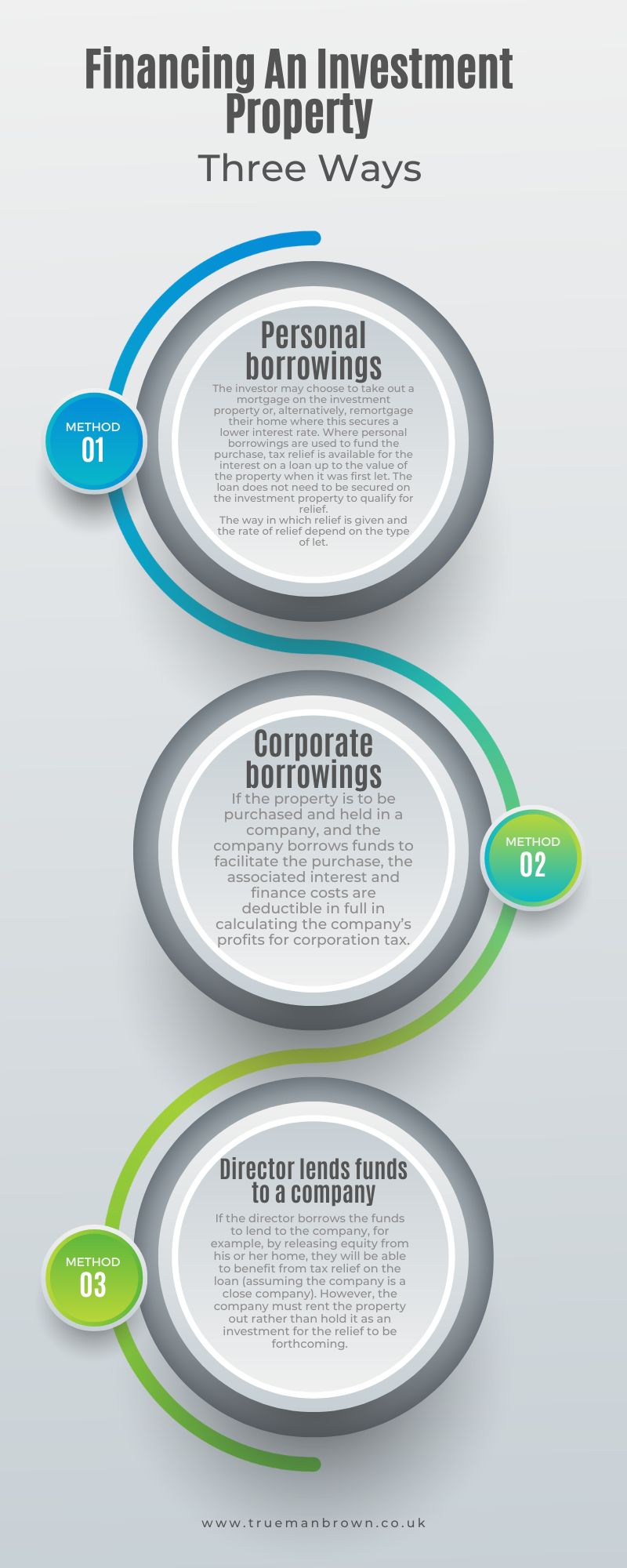Local accountants and tax advisers, Trueman Brown, advise landlords that the way in which tax relief is given for mortgage interest depends on the type of let..
Many landlords purchase their investment properties with the aid of a mortgage.
In the current climate of rising interest rates, landlords may be wondering whether any tax relief is available to help them.
While tax relief is available for interest and finance costs (but not capital repayments), the nature of the relief depends on the type of let.
The relief may also be capped if the landlord has extended the mortgage since first letting the property.
No tax relief is available for interest on a loan to buy a main residence.
General rule
Regardless of the type of let, the general rule is that tax relief is available for interest and finance costs on borrowings up to the market value of the property at the time that it was first let.
The borrowings do not have to be secured on the let property – the landlord can release equity from their main home and use this to buy the let property and still claim tax relief for the associated interest.
To take advantage of rising house prices, the landlord may remortage a property to release equity to use as a deposit to expand their property portfolio.
However, from a tax relief perspective, problems arise if the borrowing exceeds the value of the property when first let as relief is only available on borrowings up to that level.
Interest paid on borrowings in excess of this does not qualify for relief.

Example
Julie bought an investment property many years ago for £100,000, letting it immediately.
The property is now worth £500,000 and Julie has released equity to expand her portfolio.
The mortgage is currently £400,000.
Julie is only eligible for tax relief on borrowing of £100,000; no relief is available for the interest payable on the remaining £300,000.
Residential lets
Stricter rules govern the tax relief that is available to unincorporated landlords letting residential properties.
Here, relief is given as a tax deduction equal to 20% of the interest and finance costs (capped at the tax due on the rental profits).
The landlord cannot deduct the interest and finance costs when calculating the taxable profits.
This means that where the landlord is a higher or additional rate taxpayer, they do not get relief at their marginal rate of tax.
The relief is capped at 20%.
Other lets
The rules applying to non-residential lets, including furnished holiday lettings, and to companies (regardless of the type of let) are more generous.
Interest and finance costs can be deducted in full when calculating taxable profits, ensuring relief is given at the landlord’s marginal rate of tax.
Trueman Brown Chartered Accountants: Your Partner in Tax Compliance
Navigating the intricate web of HMRC regulations can be overwhelming for taxpayers. Trueman Brown Chartered Accountants serve as invaluable allies, offering expert guidance to ensure compliance with tax regulations and bringing your tax affairs up-to-date.
Trueman Brown provides comprehensive services tailored to meet the specific needs of landlords:
- Tax Compliance Assistance: Meticulously analyzing financial records to ensure accurate reporting of rental income and expenses in compliance with HMRC guidelines.
- Deadline Management: Adeptly managing submission deadlines to prevent penalties or interest charges resulting from missed deadlines.
- Optimizing Tax Efficiency: Exploring legal avenues to maximize tax efficiency for landlords, ensuring they benefit from available deductions and reliefs while staying compliant.
In conclusion, HMRC’s vigilant methods in monitoring taxpayer’s income underscore the importance of accurate and timely reporting. Trueman Brown Chartered Accountants stand as reliable partners, guiding landlords through the complexities of tax compliance and empowering them to bring their tax affairs up-to-date while maximizing financial efficiency and avoiding the repercussions of non-disclosure.

Recent Comments